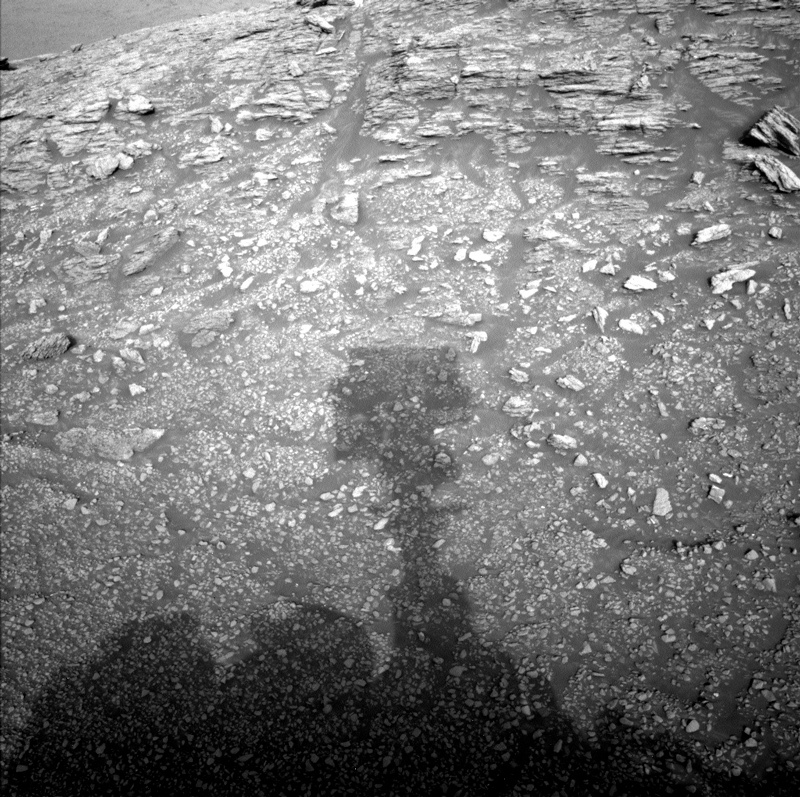3 min read

Today, Curiosity found herself parked in front of a beautiful "bench" outcrop. We took this beautiful image of the rover’s shadow falling on that outcrop. The benches in this area are raised relative to the nearby surroundings, indicating that they are more resistant to erosion than the surrounding rock. Investigating the compositions to explain this difference is one of the current science objectives, requiring us to investigate both the bench and the flatter ground nearby to compare.
Data from the second sol of plan won’t be down in time for Friday’s planning so we are fitting lots of activities into the first sol. First, we’re going to do some contact science on a target called "West Loch," which is a target on this apparently less resistant material near the base of the bench. While most of the workspace is fairly broken up, making most of the rocks too small for the Rover Planners to accurately target, this pebble is large enough to place the arm on and get good contact. It is still not big enough to safely or effectively brush, so we are only making MAHLI and APXS observations on the dusty surface. Along with the APXS and MAHLI observations, we’re doing a lot of targeted science with ChemCam and Mastcam at three targets ("Bood," "Black Mire," and "Dale") in and near the workspace to better characterize this less resistant layer.
When all the imaging is complete, the rover will do a short (about 6-7 meters) drive to get the vertical surface of the bench into reach for the arm. After the drive, we expect to be parked on the slope of the bench. We’ll be taking lots of up-close imaging of the bench to help us target in the weekend plan. This will allow us to do contact and targeted science observations on the resistant layers, which can then be compared to today’s analyses.
The second sol of plan will be untargeted science, including a two-target ChemCam AEGIS observation, which will allow the rover to pick its own targets to image and investigate with LIBS. Also included are several environmental and atmospheric observations, to continue our tracking of the dusty conditions, including a Mastcam tau sun observation and a Navcam line of site image, both to look at the amount of dust in the atmosphere, and a dust devil movie.
Written by Ashley Stroupe, Mission Operations Engineer at NASA's Jet Propulsion Laboratory







